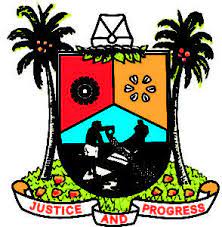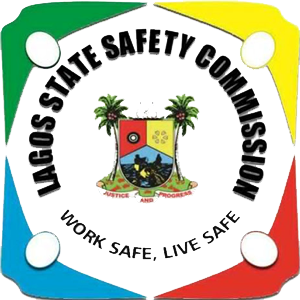RISK MANAGEMENT & REGULATORY AFFAIRS
RISK MANAGEMENT & REGULATORY AFFAIRS
Standard Operating Procedure
1.0 Preamble
1.0.1 The standard operating procedure (SOP) for the Risk Management & Regulatory Affairs department highlights all steps required to be followed in engagement of Safety Consultant or Assessor, Safety Practitioners, Safety Training Outfit with the Commission.
1.0.2 All applications must pass through the department for proper registration with the Commission before they can proceed to their respective department.
2.0 PROCEDURES
2.0.1 All applications shall be processed in accordance with the following procedure:
- Applicant must write a letter of application using company’s letter head with valid phone number, company address, E-mail address to the Director-General/CEO. The application must be accompanied by all safety qualifications of the applicants. The DG then minutes the application to H(RM&RA).
- The head (RM&RA) then minutes the letter to an officer who process the application by carrying out all or any combination of the following depending on the peculiarity of such application:
- Acknowledge the receipt of the application and invite the proponent to submit Company profile, CV of Staff and also pay a non-refundable processing fee Fifteen Thousand Naira (₦15,000) etc.
- Invite the Company for presentation on area of competence
- Schedule time and date for the presentation
- After presentation, a detailed technical report shall be prepared and recommendation on whether or not to accredit the proponent shall be presented to the Director-General/CEO to recommend.
- Upon successful approval of the application, the proponent would be notified to pay registration fee of One Hundred Thousand Naira (₦100,000) to the Commission, and also should present evidence of registration with Public Procurement Agency and payment of Attorney General fee.
- On completion of all payment above, the proponent would be issued accreditation letter stating the work domain suitable to their area of competence for a period of 12 Calendar months, and could then proceed to the domain department for further action.
3.0 PETITIONS/COMPLAINTS AND INCIDENT
3.0.1 All petitions and complaints on facilities as related risk management containing valid phone number(s), writer’s name and address would be treated by an assigned officer by HOD.
3.0.2 The following procedure must be followed in treating such petition;
- The petitioner is contacted on phone for clearer statement of problem and then a date is fixed for inspection of the problem area.
- A detailed technical report (with Photographs) is prepared and forwarded to the HOD with appropriate recommendation within 48 hours of visit.
- Based on the recommendation and the directive by DG or HOD, more actions may be needed such as inviting the parties for a meeting, issuance of stop-work-order or the facility may be recommended to be sealed.
- The case may also be recommended to the legal department for prosecution.
3.0.3 On getting information on safety incident such as fire incident, fatality or injuries, an investigative team would be formed by the HOD to carry out investigation at the scene of incident. The team shall carry out their task using the following;
- Interviewing the Management, members of staff, facility owner, third party contractors, security men, and eyewitnesses to gather information.
- Inspection of the incident scene
- Pictorial evidence.
- Analyze the information provided to assist with establishing the cause of the incident.
- A detail accident investigation report is generated and submitted to the DG / CEO for the final actions
4.0 RISK ASSESSMENT OF TALL BUILDINGS
4.0.1 The demand for high rise building continue to grow, due to the reduction of usable land area in Lagos state. This has led to a rise in incidents and fatalities.
According to the International Conference on Fire Safety in High Rise Building, which defined high rise build as any structure where the height can have a significant impact on evacuation.
Generally, a high rise building is considered to be one that extends higher than the maximum reach of available firefighting equipment (High Rise Security and Fire Safety 2009).
High rise buildings in this case refers to any multi story building above four floors which is currently occupied or under construction.
4.0.2 PROCEDURE
- The work frame is zoned according to the Six (6) geo- political zone
- Accredited consultants are allocated with a zone to work
- Letters are given to consultant to conduct risk assessment in the allocated tall buildings at a fix fee
- Report of the risk assessment is submitted to the organization indicating timeline for compliance to recommendations proffered.
- A copy of the report is forwarded to the Commission for onward monitoring for compliance.
- After compliance, the organizations are issued Compliance Certificate.
4.0.3 VALUES OF RISK ASSESSMENT AND RISK MANAGEMENT
- Risk assessment help the organisation to save cost and better allocate its resources in ensuring the safety of lives and properties.
- Risk assessment help the organisation to identify hazards associated with its operation and measure to be implemented in ensuring a safe work practice.
- Risk assessment provide a convenient platform for identifying, structuring and evaluating safety performance measure in different stages of the design, operation or job process.
- Risk assessment provide Logic, quantitative and qualitative approach for analysing scenario that can lead to mishap and accident
- Risk assessment assist management in making Risk decision to develop the most effective strategy to reduce or eliminate risks.
- Risk assessment help the organisation in complying to regulations
5.0 ACCIDENT/ INCIDENT PREVENTION PLAN (APP)
5.0.1 An accident prevention plans a plan to identify, assess, and prevent hazards in your workplace. It is a long-term commitment to risk management that involves regular inspection, updates, and preventative actions, constantly evolving to address the risks that your workplace.
5.0.2 Accident prevention refers to the plans, preparations, and actions taken to avoid accidents or stop them from taking place. Its includes all measures taken in an effort to save lives, escape from injury, lessen the degrees of injury, avoid damage to property, reduce treatment and compensation costs, and prevent the loss of productive time and morale.
5.0.3 STEPS
- Letter for submission of an Accident Prevention Plan is forwarded to facility with a previous record of incident and investigated by LSC team.
- The Accident Prevention Plan submitted by facilities are reviewed by within 48hrs of receipt
- The reviewed reports are submitted to the Director General for perusal and approval.
- The report is submitted to the facility.
PARTNERS


